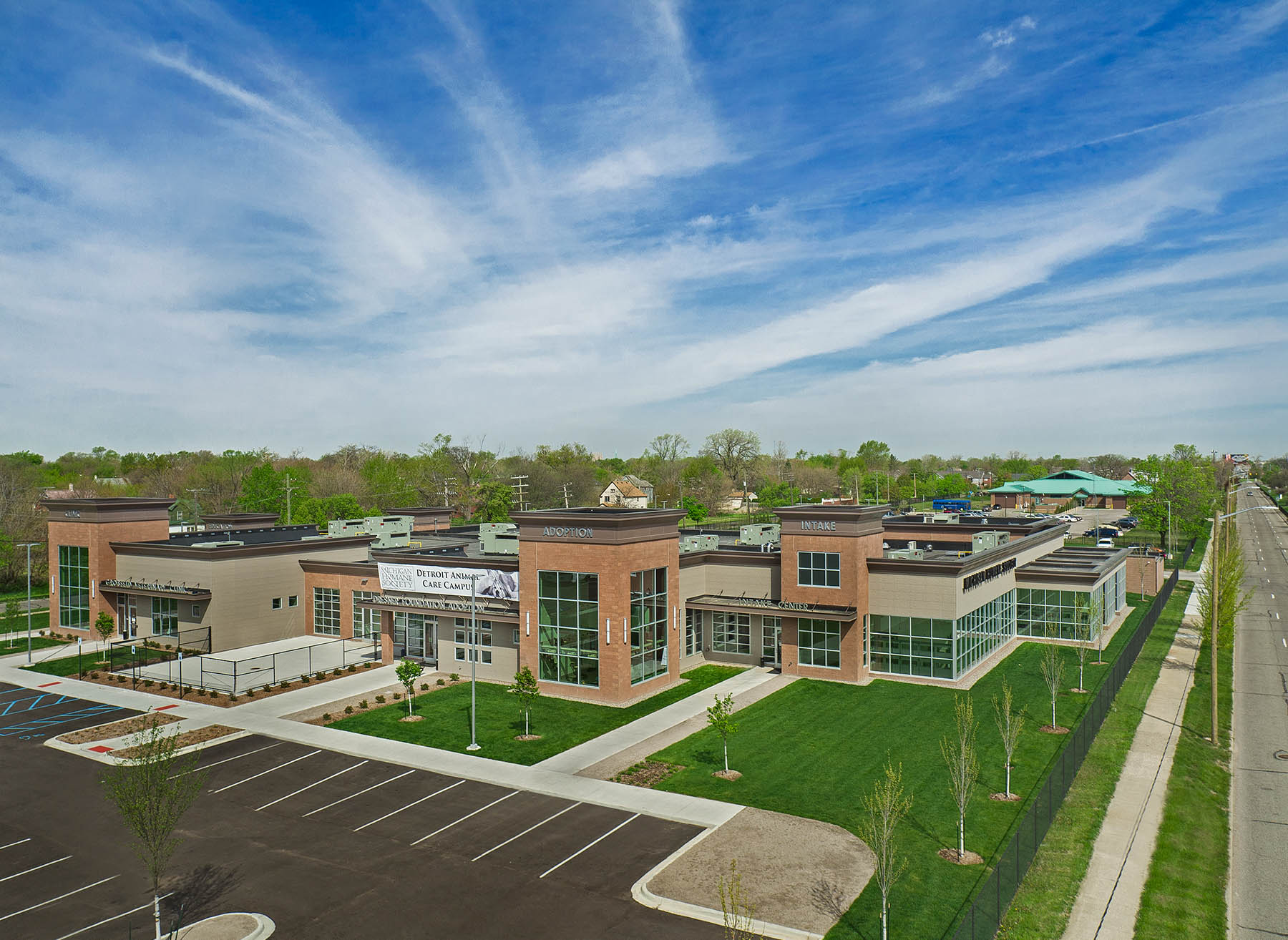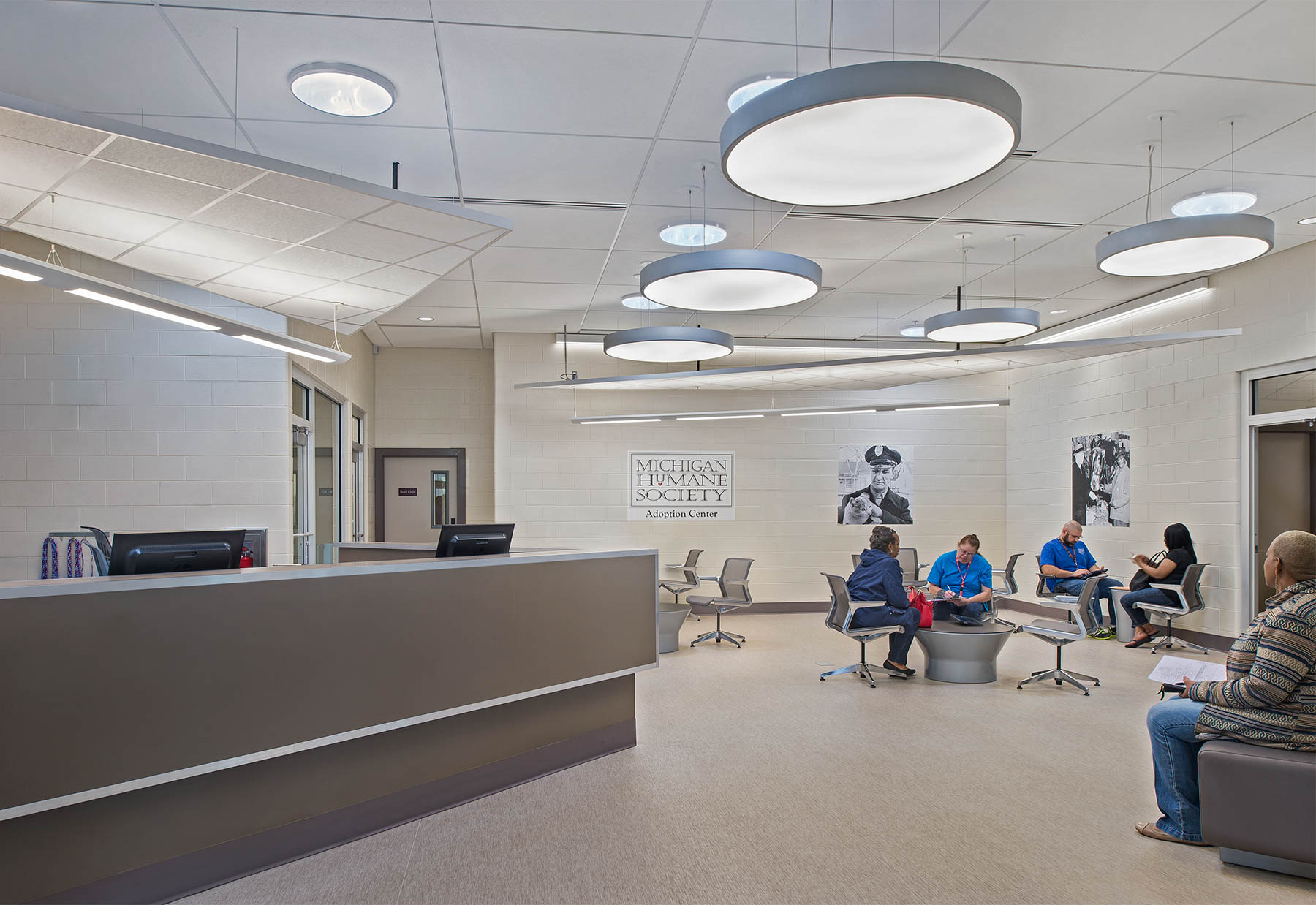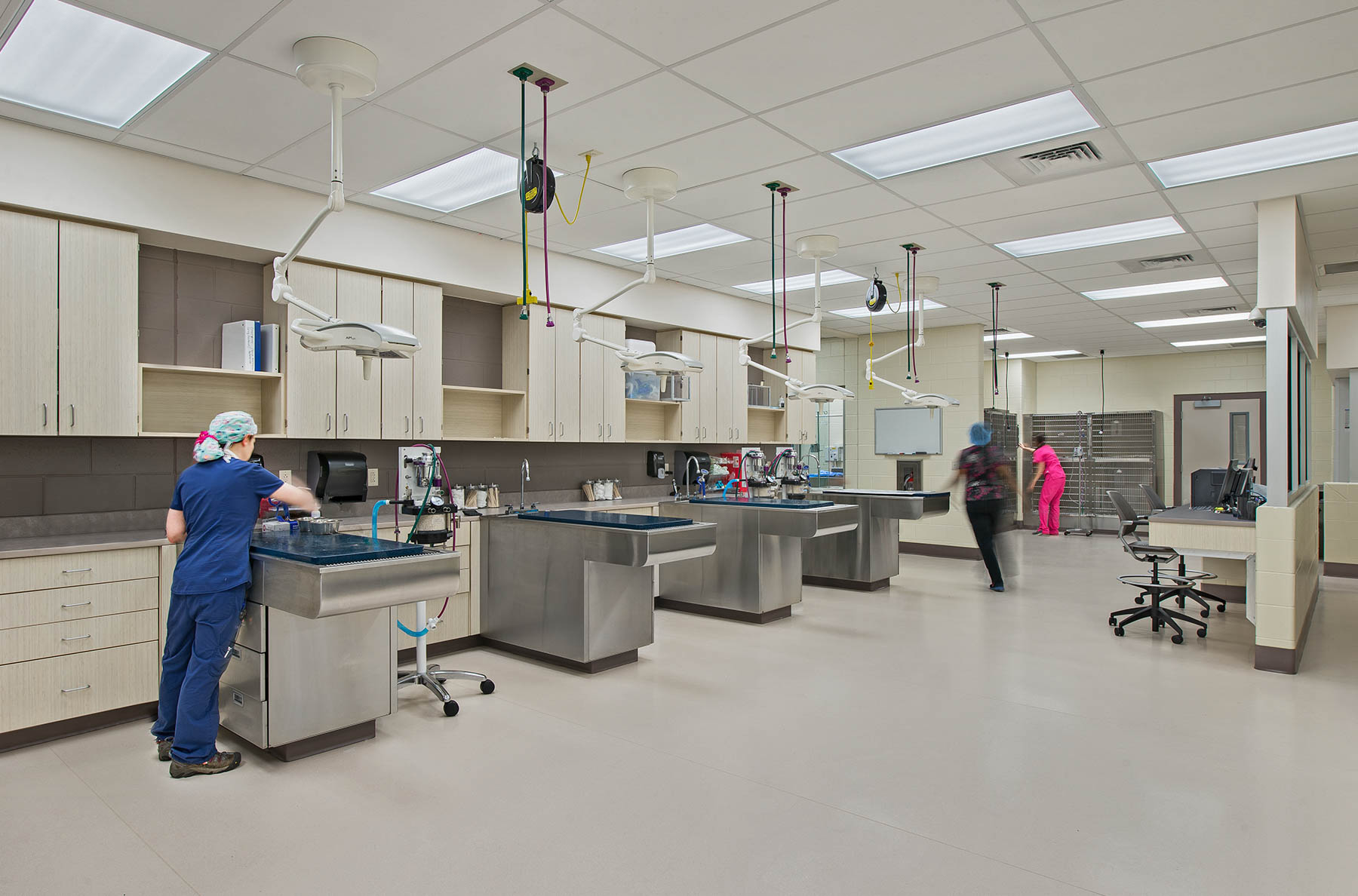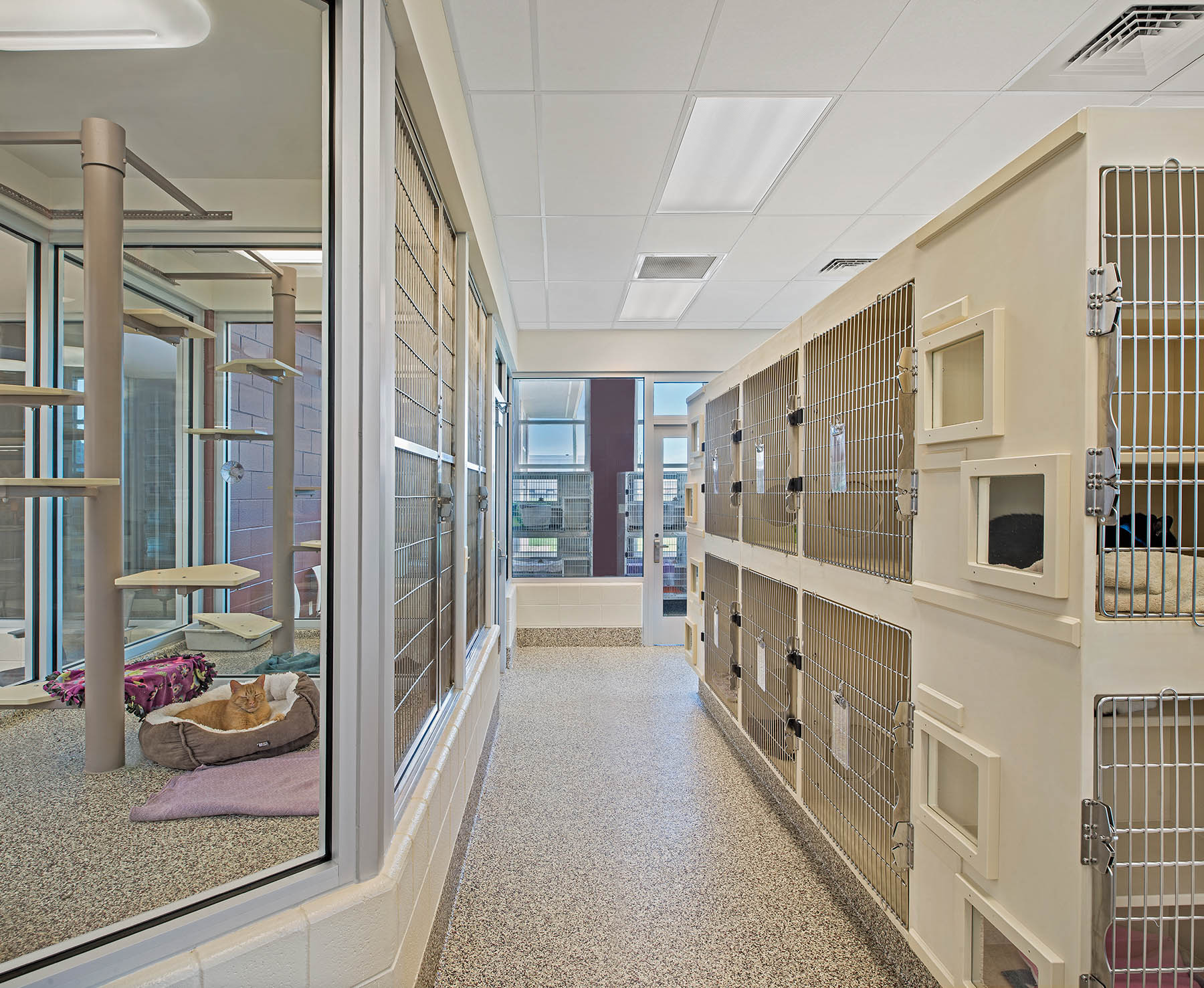Case Study
CASE STUDY
SECTOR:
LOCATION:
SIZE:
KEYS TO THE PROJECT:
- Mitigating tough soil conditions
- Cost-effective value management
- Building materials with a sustainable focus
When Sachse Construction began the site preparations for the new 28,000 square foot Michigan Humane Society in Detroit, MI, the project team encountered a common challenge associated with erecting a new building on a site that was used previously for another purpose. Specifically, the team needed to remove the lightly contaminated soils from the brownfield site where the team would construct a new treatment and adoption facility.
Throughout preconstruction, the team discussed constructability and value management with the Michigan Humane Society and the architect. Based on these discussions, it was clear to the Sachse Construction team that the client valued sustainability, a cost-effective approach, and keeping the focus on the end-user needs of the staff and animals.
The contaminated soil presented several issues, including added costs for removing the dirt via truck to a class 2 landfill, logistics for bringing trucks on-site for dirt removal, and possible schedule extension to accommodate proper removal. The Michigan Humane Society, Sachse Construction, and the architect set to work to find a solution to address the site contamination. Additionally, the client challenged the team to come up with additional cost savings.

Construction Time Lapse
The team utilized an OxBlue time lapse video to show construction progress in real time.
Looking at the project holistically, the team maintained a focus on finding a solution that did not inhibit the building’s purpose – to be a state-of-the-art home and medical facility for animals. In looking at the site, there was additional unused space that could potentially accommodate the soil, allowing for the team to keep it on-site yet away from the construction area. The team came up with the idea to create a berm and concrete dog runs. This solution provided overall cost savings and an effective solution for the contaminated soil, increased privacy from the surrounding neighborhood, and created additional sustainable green space and more outdoor play areas for the resident dogs.






